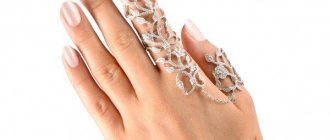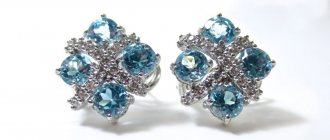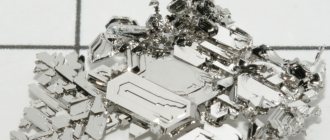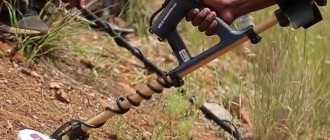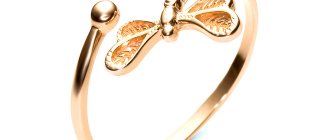Roller sizing
The working body is two independently adjustable pairs of rollers, forming a square or rectangular gap. Since the pairs of rollers are independently adjustable, by adjusting one pair (by decreasing or increasing the gap between the rollers) we achieve a rectangular gap setting. Roller sizing is used for calibrating chains such as Bismarck, Cartier, Link, Armor, Mona, Rambo, etc. For calibrating links in two simultaneous directions and eliminating twisting defects.
To calibrate the links, the chain is placed between the rollers, the rollers are brought vertically and horizontally to the surface of the chain. Then, reducing the gap, we pull the chain through the rollers, gradually reducing the gap between them with each pull. In this case, the chain is compressed in two directions, at the same time the links are calibrated to the same size. Calibration of the links gives the chain a marketable appearance, smoothing out all the irregularities during knitting. This is a necessary condition for further diamond cutting of the chain; the same cross-section of the chain links is achieved.
The roller sizing at the output is equipped with a device that removes twisting defects. If you take a hand- or machine-knitted chain in your hand and let it sag vertically, you will see that the chain links gradually twist into a spiral, while at a length of 55 cm, the links can make several helical turns relative to the axis. This is a product defect. A screw with a length of 55 cm is allowed, no more than one spiral.
This defect is especially evident in chains with twisted links: shell, rimbaud, etc. The defect appears due to uneven twisting of each chain link during knitting.
Roller sizing has an additional pair of rollers located at the exit from the calibrating ones, capable of being installed at different angles to the calibrating rollers and forcing the chain during calibration to be forcibly unscrewed in the direction opposite to the screw defect. This removes the chain screw.
The installation angle of the rollers is usually determined experimentally when calibrating a particular chain. The degree of defect elimination is determined visually by hanging a section of the chain vertically. In this case, an experimental half-meter sample of the chain is first stretched, and when the required angle is selected, the rest of the batch being produced is stretched.
The circuit calibration work is carried out as follows:
- Pre-set the gap between the calibration and straightening rollers.
- A wire is threaded into the end of the chain to wind the chain into the casing.
- The chain is stretched.
- The degree of calibration and straightening of the links is visually assessed.
- The gap and angle of rotation of the rollers is adjusted.
- The chain is re-stretched.
- Additional chain corrections for clearance, etc. are introduced.
The final calibration and straightening of the links is carried out several times.
It should be noted that it is necessary to set the maximum degree of compression of the links during calibration and straightening. With a small degree of compression, the original size of the chain can be restored at the bottom of the elasticity of the links. The second purpose of the product is calibration and production of hollow bars of rectangular and square sections. Currently, various methods for producing tubes are used in jewelry production. Basically, this is continuous casting and production of the workpiece by flexible and argon welding. Then the resulting workpieces are drawn on chain drawing machines combined with heat treatment. Thin-walled tubes are drawn with an internal filler that prevents deformation of the tubes.
Steel, aluminum, and polymer materials are used as fillers in various technologies. Tubes of square and rectangular cross-section are produced by drawing rolled products through round dies, and in the final operation to give the required shape through roller sizing, which performs the function of a square die. In this case, drawing occurs both manually and when installing it on a drawing machine. Subsequently, by removing the filler, hollow blanks of various rectangular sections are obtained, used in the production of jewelry: bracelets, necklaces, rubber ends, earrings, etc. In the process of drawing hollow workpieces, instead of smooth ones, rollers with corrugations and various patterns can be installed on the casing, which transfer the imprint of the ornament to the drawn workpiece. Currently, VTK private enterprise produces roller sizing in two sizes: maximum roller spread of 7 and 10 mm.
Overview of sizing design
1. The purpose of the sizing machines produced by VTK is reduced to calibration and straightening of various types of chains and various forms of rolled tubular products.
In the production of chains, these operations are performed on hammering presses (see figure) using expensive equipment. In terms of straightening chain links, sizing can simplify this operation.
Roller sizing
The working body is two independently adjustable pairs of rollers, forming a square or rectangular gap. Since the pairs of rollers are independently adjustable, by adjusting one pair (by decreasing or increasing the gap between the rollers) we achieve a rectangular gap setting. Roller sizing is used for calibrating chains such as Bismarck, Cartier, Link, Armor, Mona, Rambo, etc. For calibrating links in two simultaneous directions and eliminating twisting defects.
To calibrate the links, the chain is placed between the rollers, the rollers are brought vertically and horizontally to the surface of the chain. Then, reducing the gap, we pull the chain through the rollers, gradually reducing the gap between them with each pull. In this case, the chain is compressed in two directions, at the same time the links are calibrated to the same size. Calibration of the links gives the chain a marketable appearance, smoothing out all the irregularities during knitting. This is a necessary condition for further diamond cutting of the chain; the same cross-section of the chain links is achieved.
The roller sizing at the output is equipped with a device that removes the twisting defect. If you take a hand- or machine-knitted chain in your hand and let it sag vertically, you will see that the chain links gradually twist into a spiral, while at a length of 55 cm, the links can make several helical turns relative to the axis. This is a product defect. A screw with a length of 55 cm is allowed, no more than one spiral.
This defect is especially evident in chains with twisted links: shell, rimbaud, etc. The defect appears due to uneven twisting of each chain link during knitting.
Roller sizing has an additional pair of rollers located at the exit from the calibrating ones, capable of being installed at different angles to the calibrating rollers and forcing
During calibration, the chain is forced to unscrew in the direction opposite to the screw defect. This removes the chain screw.
The installation angle of the rollers is usually determined experimentally when calibrating a particular chain. The degree of defect elimination is determined visually by hanging a section of the chain vertically. In this case, an experimental half-meter sample of the chain is first stretched, and when the required angle is selected, the rest of the batch being produced is stretched.
The circuit calibration work is carried out as follows:
- Pre-set the gap between the calibration and straightening rollers.
2. A wire is threaded into the end of the chain to wind the chain into casing.
3. The chain is pulled.
- The degree of calibration and straightening of the links is visually assessed.
- The gap and angle of rotation of the rollers is adjusted.
- The chain is re-stretched.
- Additional chain corrections for clearance, etc. are introduced.
The final calibration and straightening of the links is carried out several times.
It should be noted that it is necessary to set the maximum degree of compression of the links during calibration and straightening. With a small degree of compression, the original size of the chain can be restored at the bottom of the elasticity of the links. The second purpose of the product is calibration and production of hollow bars of rectangular and square sections. Currently, various methods for producing tubes are used in jewelry production. Basically, this is continuous casting and production of the workpiece by flexible and argon welding. Then the resulting workpieces are drawn on chain drawing machines combined with heat treatment. Thin-walled tubes are drawn with an internal filler that prevents deformation of the tubes.
Steel, aluminum, and polymer materials are used as fillers in various technologies. Tubes of square and rectangular cross-section are produced by drawing rolled products through round dies, and in the final operation to give the required shape through roller sizing, which performs the function of a square die. In this case, drawing occurs both manually and when installing it on a drawing machine. Subsequently, by removing the filler, hollow blanks of various rectangular sections are obtained, used in the production of jewelry: bracelets, necklaces, rubber ends, earrings, etc. In the process of drawing hollow workpieces, instead of smooth ones, rollers with corrugations and various patterns can be installed on the casing, which transfer the imprint of the ornament to the drawn workpiece. Currently, VTK private enterprise produces roller sizing in two sizes: maximum roller spread of 7 and 10 mm.
Square sizing
It is a simplified version of the roller caliper. The working tool in it is not rollers, but plates with lead-in chamfers, the position of which is changed by a screw. The plates form only a varying square gap between themselves.
However, square sizing successfully calibrates the anchor chains and, due to friction on the plates, produces the initial formation of the edges. The gap varies from 0 to 15 mm.
Square sizing is low cost and easy to use.
Sincerely, Director of the private enterprise "VTK", Butuzov Yuri Eduardovich.
(048) 743-71-08
Square sizing
It is a simplified version of the roller caliper. The working tool in it is not rollers, but plates with lead-in chamfers, the position of which is changed by a screw. The plates form only a varying square gap between themselves.
However, square sizing successfully calibrates the anchor chains and, due to friction on the plates, produces the initial formation of the edges. The gap varies from 0 to 15 mm.
Square sizing is low cost and easy to use. https://www.vtk.com.ua/
WE PRINT 3D MODELS FOR LIQUID RUBBER AND FOR RUBBER WITH VULCANIZATION AT LOW TEMPERATURES. WE CARRY OUT CNC MILLING OF WAX MODELS.
We print models using selected models from our catalog, according to your sketches, photographs, *stl files.
Printing price 950 rub./cubic cm. Model sizes according to your requirements. Design development is paid. 3D PRINTING MODELS.
This technology makes it possible to print models for liquid rubber and for rubber vulcanized at low temperatures and subsequent direct casting. 3D printing for jewelers allows you to produce models of complex designs that cannot be milled on CNC machines.
CNC MILLING OF WAX MODELS.
CNC machined green wax models are ready for direct casting.
Jewelry equipment and jewelry tools
To make precious items, you need special jewelry equipment, which you can purchase in the DRUSE online store. In order for all the work to look great, it is necessary to process metals and stones using high-quality tools. Otherwise, they may be hopelessly damaged, and the amount of losses may exceed the cost of the equipment several times.
Types of instruments
The materials for making jewelry differ in their characteristics, because it can be not only traditional gold, silver or platinum, but also lesser-known palladium, ruthenium, and iridium. They differ in hardness, ductility and other characteristics, so a set of tools for jewelry work must be selected accordingly. The equipment can carry out complete processing of precious metals - melting, drilling, making voids, polishing, rolling, etc.
The range of work is wide, so all jeweler’s tools can be divided into several groups:
- Melting furnaces (for melting precious metals).
- Drills (for processing, grinding, texturing).
- Tumbling (for polishing and grinding). Scales (for accurate determination of mass).
- Electric furnaces (for calcination and firing).
Here you will also find jewelry foundry equipment, you can buy paste, sandpaper, rollers and other high-quality equipment.
Why is it profitable to shop with us?
Working with us, you get a reliable jewelry tool. Yekaterinburg is a city where we provide free delivery when purchasing goods for a certain amount. Moreover, we can send the goods you need for work to any region of the country; Pickup is also possible. We work with various forms of payment, including cash, bank transfer, transfer of money to a card. By contacting us, you purchase only high-quality products from trusted manufacturers. Call - and cooperation with us will bring you only positive emotions.

